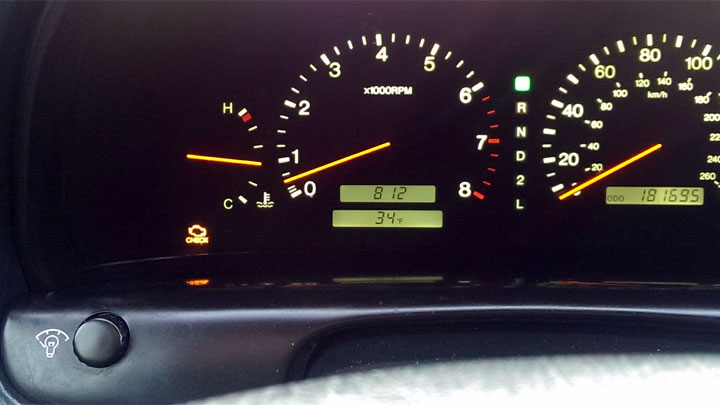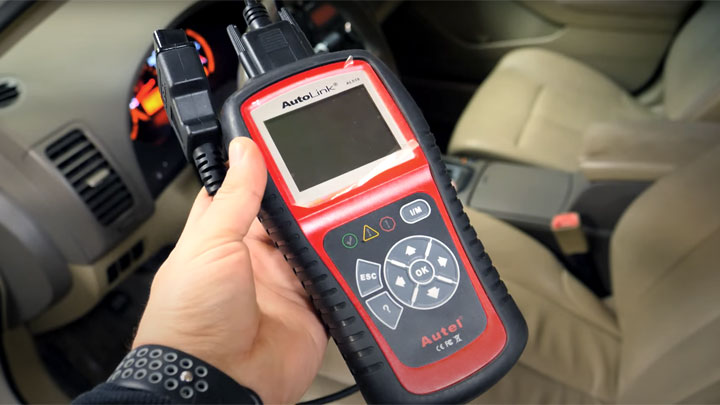Last Updated on November 3, 2022
The last thing anyone wants to see when they get behind the wheel of their vehicle is the check engine light staying on. But for thousands of drivers each day that’s exactly what happens.
But once you get your heart out of your throat and figure out what the code is, you still have to know what to do. So, what does it mean when you have a code P0130, and more importantly, how do you fix it?
The good news is that with a code P0130 there’s a good chance you dodged an expensive bullet, but we can’t definitively say that for you at this point. Just keep reading and we’ll clear everything up for you.
What Does Code P0130 Mean?
If you have a code P0130 it means that there’s a problem in one of your vehicle’s oxygen sensor circuits. The problem could be with the sensor itself, or it could be with the wiring, or just about any portion of the circuit.
Compared to some oxygen sensor codes, a code P0130 doesn’t narrow things as far down for you. Still, the code is pointing you right towards the exhaust system, and that’s where you need to start your troubleshooting.
See Also: P0131 Code, P0132 Code, P0133 Code, P0134 Code, P0136 Code, P0137 Code, P0138 Code, P0160 Code
Symptoms of Code P0130

If you have a code P0130, you’re obviously going to have a check engine light, but what else might you notice happening? Well, one of the most common symptoms is a rough idle, and if the problem is bad enough, your vehicle might die.
However, you’ll almost always see a drop in fuel economy if you’re paying attention. Finally, depending on the exact cause of the problem, you might have black exhaust smoke, and you might notice a foul smell coming from your exhaust.
Occasionally, you might not see any symptoms, but this is extremely rare. Usually, there will at least be a drop in fuel efficiency, even if you don’t pay close enough attention to notice it.
- Check engine light
- Rough idle
- Decrease in fuel economy
- Black exhaust smoke
- Rotten egg smell
- Vehicle dying
- Occasionally no noticeable adverse symptoms
Causes of Code P0130

While we’d love to tell you exactly what component is faulty without even looking at your vehicle, with a code P0130 it’s simply not possible.
We can say that the most likely cause is a defective oxygen sensor, but you’ll often find that the air-fuel ratio sensor is the problem instead.
Both of these are extremely common causes of this code, which could be any one of them. However, while those are certainly the most likely causes, they aren’t the only ones.
Additionally, the wiring needs to be intact and functioning for any of these components to work the way they should. Because it doesn’t matter if the sensors or heating units are working as they should if they can’t get any power or send the signal to the PCM.
Other (much rarer) potential causes include an exhaust or intake leak, low fuel pressure, or even an outdated or defective PCM.
- Defective oxygen sensor
- Defective air-fuel ratio sensor
- Exhaust leak
- Intake air leak
- Low fuel pressure
- Defective engine coolant temperature sensor
- Wiring, circuit, or electrical problem
- Outdated PCM software
- Faulty PCM
Is Code P0130 Serious?
With so many potential causes of a P0130, it’s hard to tell you right off the bat whether it’s serious. Most of the time it’s a minor issue that won’t cause further problems if it takes you a few weeks to repair it. However, depending on the exact issue, it can be a serious problem.
Because of this we highly recommend at least getting a proper diagnosis right away. If your mechanic tells you that it’s a faulty oxygen sensor, it’s not that serious, but it also won’t cost you that much to fix.
But if the problem is low fuel pressure or a faulty PCM, it’s something you’ll want to address right away.
How to Fix

While we’d love to give you some backyard hacks to figure out what’s going on, the truth is that without an automotive scan tool, it can be hard to narrow down what’s going on any further. Sure, you can swap and replace parts, but you’re really just hoping for the best if you do this.
#1 – Rule Out an Exhaust Leak
About the only thing you can rule out without a scan tool is an exhaust leak. To rule out an exhaust leak, park your vehicle in a quiet area and start it up. Block off the exhaust at the tailpipe with a flat object and listen. If you hear a hissing sound, it means there’s a leak somewhere.
It won’t necessarily tell you if that’s what’s causing your code, but even if that’s not causing the code, an exhaust leak is another problem you’ll want to address.
#2 – Check Oxygen Sensor
If you have a scan tool, the rest of the troubleshooting is pretty straightforward. Keep in mind that when you narrow it down to a single component, you want to look around that area before pulling and replacing parts. Double check the wiring, and always check for power at the component before replacing it!
When you’re looking at your scan tool, check the oxygen sensor readings first. You’re looking for an output voltage between 0.1 and 0.9 volts. The input should fluctuate quite a bit as well, so don’t think it’s a problem if that’s what the readings are doing.
In fact, you should be more worried if they’re not fluctuating at all (if that’s the case the sensor is probably faulty too). Anything outside this range tells you that something isn’t working the way it should.
#3 – Check Air-Fuel Ratio Sensor
Next, check the readings from the air-fuel ratio sensor. You’re looking for around 3.3 volts, and a reading close to 14.7:1. While slight variations outside this reading are fine, anything too far out of range signifies a problem, and anything way out of range means you probably need to replace the sensor.
#4 – Check Coolant Temperature Sensor
After that, check the coolant temp sensor. When the engine is cold, this sensor should push out 2-volts, and when it warms up it should push out 0.5-volts. Any deviation even by 0.25-volts signifies a problem.
#5 – Check Fuel Pressure
Next, look at the fuel pressure. The vehicle should have at least 5 PSI or the problem is in the fuel system.
#6 – Professional Help
Finally, if all these readings check out, and you don’t have an exhaust leak, take it to a dealership. The problem might be a faulty or outdated PCM, and either way, only a dealership can fix it for you.




